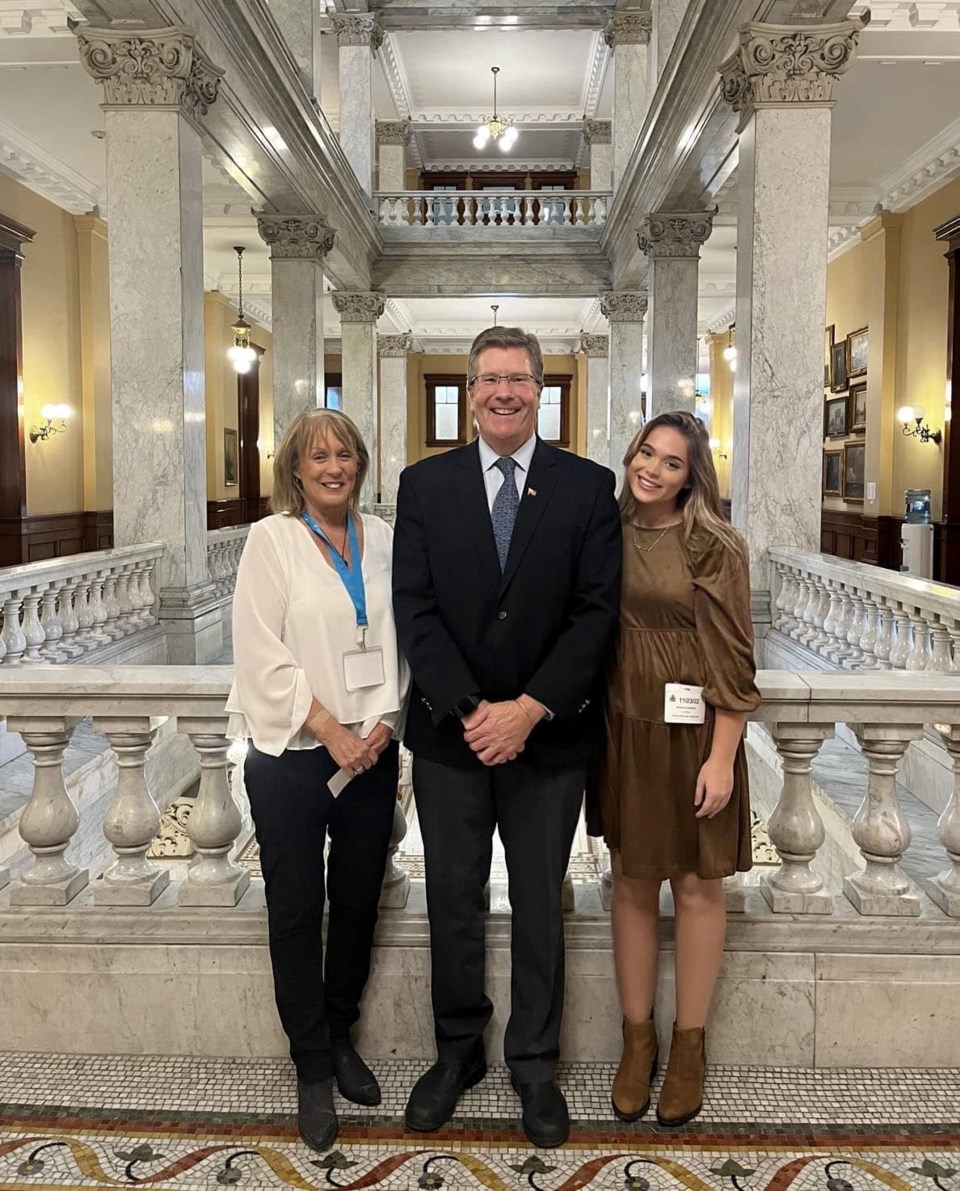For more than a decade, Bradford resident Beth Vanstone has been advocating on behalf of Cystic Fibrosis (CF) and Rare Disease patients after her daughter Madi was diagnosed with CF at just eight months old in 2001.
On February 28, which is Rare Disease Day, Vanstone and Madi spent the day advocating alongside the Canadian Organization for Rare Diseases (CORD) at Queen’s Park, where they met with MPPs to discuss the need for a Rare Disease Drug Strategy (RDDS).
On Wednesday, March 22 the mother-daughter duo got the news they’ve been waiting so long to hear.
Minister of Health, Jean-Yves Duclos, announced measures in support of the first-ever National Strategy for Drugs for Rare Diseases, with an investment of up to $1.5 billion over three years.
“We are very excited about the launch of the RDDS, we feel the door has been opened to make the changes needed for those who suffer from a rare disease,” said Vanstone. “When Madi was very sick with Cystic Fibrosis and looking at a possible lung transplant, we quickly learned how very flawed our system is. It took Madi nearly two years to gain access to a drug (Kalydeco), which has saved her life. We have watched helplessly as others have not gained access to a drug that would save their life. Canadians deserve better.”
In Canada, one out of 12 people—many of whom are children—has a rare disease. There are thousands of different rare diseases that affect patients, their families and caregivers across the country. Unfortunately, treatments are only available for a small percentage of these conditions. Even when treatments that might dramatically improve the quality of a patient's life are available, they are often unaffordable and out of reach.
As part of this overall investment, the Government of Canada will make available up to $1.4 billion to provinces and territories through bilateral agreements. This funding will help provinces and territories improve access to new and emerging drugs, as well as support enhanced access to existing drugs, early diagnosis, and screening for rare diseases.
"Access and affordability should never be a barrier to care,” said Duclos in a statement. “Through this new strategy, Canadians living with a rare disease will soon have improved screening and diagnostics, and better access to affordable and effective treatments they need, no matter where they live.”
The announcement is the result of feedback from extensive consultation that garnered diverse perspectives from over 650 individuals and organizations, including patients with lived experience, as well as caregivers and family members.
“Madi and I have been working towards a Rare Disease Drug Strategy since we realized how difficult it was for Rare Disease patients to access lifesaving treatments back in 2012,” explained Vanstone. “There are many who have been working towards this goal including CORD."
For its part, CORD said it too welcomes the new drug funding announcement, calling it a major step to value-based pharmacare and healthcare.
“CORD is especially gratified that the federal government heard our recommendations for a comprehensive strategy that includes investment in infrastructure, including centres of expertise, that will facilitate faster diagnosis and treatment access with on-going patient monitoring and data collection," said Durhane Wong-Rieger, CORD President & CEO.
“For decades, Canada has been one of the only developed countries without a national rare disease plan, Wong-Rieger noted. “With this announcement, Canada has the opportunity to implement the very best program in the world for rare disease patients.”
Vanstone believes with proper implementation the long delays to access may soon be eliminated.
“Canadians will have equal access to lifesaving treatments regardless of their postal code. (As funding is often provincial, you may or may not have access due to the province you live in.) These are just two of the many issues that can be addressed by the RDDS,” she said.
In addition, Duclos says this strategy will “improve the collection and use of evidence and strengthen investments in critical research and innovation in rare diseases.”
Vanstone says it’s a wonderful start.
“The next steps include meeting with the provinces to have them coordinate with the federal government to provide the best possible impact for patients," she said. "We hope to be a voice in helping government recognize the specific needs of the Rare Disease community.”
Vanstone and her daughter Madi will be in Ottawa next week at The Rare Disease Drug Conference to meet with MPs and others in the Rare Disease community to detail specific needs.
“This is a big opportunity and we look forward to finding a better pathway for Canadians living with Rare Disease in the near future.”
More information on CORD can be found here.



